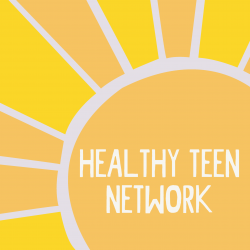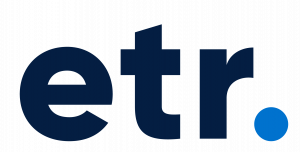Why do we need to use a variety of teaching strategies when teaching sex education? Which ones work best, and why? What can go wrong, and what can we do about it? This training will help instructors answer all of these questions, and feel more competent in delivering engaging and interactive sex education.
Training Hub
The Sex Education Collaborative Training Hub lists trainings for sex educators, facilitators, and other professionals on best practices for sharing important information with clients and the public. From teaching anatomy inclusively to effectively addressing bias in the classroom to addressing racial justice and equity in sex education, the Training Hub includes trainings, technical assistance, and policy support from state, regional, and national leaders in the field of sex education.
Please note: The Training Hub includes both in-person and online professional trainings. If you see a training you are interested in and it isn’t listed as virtual, please reach out directly to any of our members to find out what's possible!
Trainings Offered by State-Based and National Organizations
Displaying results 131 - 135 of 154Teaching Strategies for Sex Education
- Indicator 1 (K-12): Demonstrate three techniques to create an inclusive and affirming learning environment. (S)
- Indicator 1 (K-12): Demonstrate the ability to build rapport with students. (S)
- Indicator 2 (K-12): Demonstrate three student-centered instructional approaches that support a variety of learning styles. (S)
- Indicator 3 (K-12): Explain the differences between positive vs. shaming approaches to teaching sex education.
- Indicator 5 (K-12): Describe three effective strategies for practicing skills with students.
- Indicator 1 (K-12): Explain three reasons why it is important to respond to every question students ask when teaching sex education.
- Indicator 2 (K-12): Demonstrate the ability to effectively respond to three different types of challenging questions. (S)
Virtual PD - Managing Students' Values When Teaching Sex Ed
Virtual Professional Development is a simulated classroom where teachers can practice teaching student avatars using short scenarios and support from an instructional coach, so they can quickly learn and master the skills they most need to be effective. With upper elementary, middle and high school classrooms, Virtual PD has scenarios for teachers of all grade levels across a wide range of topics aligned with the Professional Learning Standards for Sex Education (PLSSE). You can watch the video here (link is external) to learn more about Virtual PD.
Using the Virtual Professional Development simulated classroom, the educator will practice Managing Students' Values When Teaching Sex Ed with the student avatars. In this VPD scenario, the participant will conduct a values continuum activity with an established classroom community. In this simulation with the five students, the educator will ask students to respond to the statement: “It’s OK for students our age to have sex, as long as they use protection.” The participant will need to demonstrate the ability to respond to students’ conversations and questions regarding personal values when teaching about sexuality.
- Indicator 4 (K-12): Demonstrate the ability to respond effectively to students’ values-based comments and questions. (S)
Reaching the Adult Learner: The Science & Art of Masterful Facilitation
This session is intended for those who work with adult learners who wish to create a powerful learning environment that results in clients taking action. With adult learners, it’s often clear what to present, but how to present it may be more challenging. Participants explore the latest in professional development research, learning theory, and brain research as it relates to adult learners to understand how the human brain acquires, retains, and applies information. They examine proven models and strategies for designing effective events, facilitating diverse groups, and motivating learners to take action. Additionally, in the longer session, participants review and practice best strategies for managing and preventing difficult training issues, including resistant or unengaged participants.
Objectives of this course:
- Describe the research-based elements of effective training design and delivery.
- Identify best practices for reaching adult learners.
- Adopt a variety of facilitation techniques and strategies that engage and motivate learners.
- Employ strategies to manage discouraged and/or resistant participants.
- Identify resources for further study and practice.
- Initiate a personal plan of action to strengthen their facilitation skills.
Visit ETR's Training & TA Form to submit your request and receive cost information.
- Indicator 2 (K-12): Demonstrate three student-centered instructional approaches that support a variety of learning styles. (S)
- Indicator 4 (6-12): Demonstrate how to use the experiential learning cycle when teaching. (S)
SIECUS is well poised to provide policy support as we are the only organization whose sole mission is to advance sex education policy at the federal, state, and local levels. For the past 55 years, SIECUS has advocated for the rights of all people to comprehensive sexuality education, and the full spectrum of sexual and reproductive health services. SIECUS is more committed than ever to the fight for the equitable provision of comprehensive sexuality information to vulnerable and marginalized populations especially people of color and LGBTQI identifying youth—and for the elimination of all barriers to access to quality reproductive health services, for reproductive justice to be actualized.
SIECUS equips state and local leaders with the knowledge they need to be confident and powerful advocates. Our staff conduct workshops and trainings around the country and provide one-on-one technical assistance by phone and email. Our policy support helps state and local leaders become stronger advocates for their missions and empowers them to addresses the root cause of key reproductive justice and sexual rights issues, moving us toward a society where issues like gender equity, sexual and reproductive health, racial justice, LGBTQ inclusion, consent, personal safety, and autonomy are well—established as part of our normal reality. Our website is a place where advocates can search our robust collection of toolkits, fact sheets, reports, and our signature report, the SIECUS State Profiles, as well as connect with a team member for one-on-one technical assistance.
Creating a Comfortable Climate
This training helps sex education instructors ensure they are using best practices when it comes to setting the tone for discussions, answering questions, preventing challenging situations, and managing them effectively if they do occur.
- Indicator 1 (K-12): Demonstrate three techniques to create an inclusive and affirming learning environment. (S)
- Indicator 2 (K-12): Demonstrate three strategies for creating culturally responsive classrooms. (S)
- Indicator 3 (K-12): Describe three elements of a trauma-informed approach to sex education.
- Indicator 4 (K-12): Demonstrate three strategies of a trauma-informed approach to sex education (e.g. giving trigger warnings before content on sexual assault and allowing students the right to pass as appropriate, etc.). (S)
- Indicator 1 (K-12): Describe the importance of teachers’ maintaining professional boundaries when teaching sex education.
- Indicator 2 (K-12): List three factors to consider regarding personal disclosure when teaching sex education
- Indicator 4 (K-12): Explain the roles and responsibilities of a mandated reporter.
- Indicator 1 (K-12): Explain three reasons why it is important to respond to every question students ask when teaching sex education.
- Indicator 1 (K-12): Describe three health (e.g. physical, social and/or emotional) and/or academic benefits of sex education for young people
- Indicator 2 (K-12): Describe state and/or district laws, policies, and standards that relate to sex education where one teaches.
- Indicator 1 (K-12): Explain the differences between personal and universal values relating to sexuality.
- Indicator 2 (K-12): Describe how verbal and nonverbal expression of personal values, and comfort with topics related to sex education, could impact one’s teaching
- Indicator 3 (K-12): Explain the importance of educators refraining from sharing their personal values when implementing sex education.
- Indicator 4 (K-12): Demonstrate the ability to respond effectively to students’ values-based comments and questions. (S)
Additional Trainings offered by out-of-state organizations
- ‹ previous
- 7 of 49
- next ›
"They Want Me to Teach What?!" Stepping into the Sex Educator Role
This full-day training is for educators who are newly tapped to teach sex education to teach them the necessary foundational skills. We will cover group rights, setting the classroom tone, managing potential challenges, establishing appropriate boundaries, and exploring personal values as they relate to teaching about sexuality. Participants will leave this training with an increase in knowledge, skills, and comfort to successfully teach sex ed. Registration link here.
- Indicator 1 (K-12): Demonstrate three techniques to create an inclusive and affirming learning environment. (S)
- Indicator 2 (K-12): Demonstrate three strategies for creating culturally responsive classrooms. (S)
- Indicator 3 (K-12): Describe three elements of a trauma-informed approach to sex education.
- Indicator 4 (K-12): Demonstrate three strategies of a trauma-informed approach to sex education (e.g. giving trigger warnings before content on sexual assault and allowing students the right to pass as appropriate, etc.). (S)
- Indicator 1 (K-12): Describe the importance of teachers’ maintaining professional boundaries when teaching sex education.
- Indicator 2 (K-12): List three factors to consider regarding personal disclosure when teaching sex education
- Indicator 3 (K-12): Demonstrate how to reduce the impact of educators’ passive and/or active personal disclosure on the educational environment. (S)
- Indicator 4 (K-12): Explain the roles and responsibilities of a mandated reporter.
- Indicator 1 (K-12): Demonstrate the ability to build rapport with students. (S)
- Indicator 2 (K-12): Demonstrate three student-centered instructional approaches that support a variety of learning styles. (S)
- Indicator 3 (K-12): Explain the differences between positive vs. shaming approaches to teaching sex education.
- Indicator 5 (K-12): Describe three effective strategies for practicing skills with students.
- Indicator 1 (K-12): Explain three reasons why it is important to respond to every question students ask when teaching sex education.
- Indicator 2 (K-12): Demonstrate the ability to effectively respond to three different types of challenging questions. (S)
- Indicator 1 (K-12): Describe three health (e.g. physical, social and/or emotional) and/or academic benefits of sex education for young people
- Indicator 2 (K-12): Describe state and/or district laws, policies, and standards that relate to sex education where one teaches.
- Indicator 1 (K-12): Explain the differences between personal and universal values relating to sexuality.
- Indicator 2 (K-12): Describe how verbal and nonverbal expression of personal values, and comfort with topics related to sex education, could impact one’s teaching
- Indicator 3 (K-12): Explain the importance of educators refraining from sharing their personal values when implementing sex education.
- Indicator 4 (K-12): Demonstrate the ability to respond effectively to students’ values-based comments and questions. (S)




